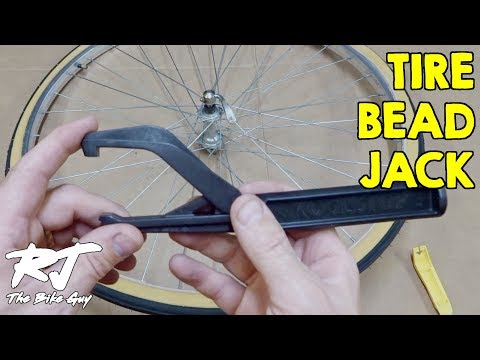Changing tyres is a fact of life for any cyclist, be it worn out treads or simply the inevitable punctures we all encounter at some point.
But changing a tyre or inner tube doesn’t have to be a major chore. As the video above shows, learning some simple techniques means saving all the struggle and you don’t even need tyre levers for the majority of setups.
Follow our steps and you can have your flat fixed, or tyres swapped, in no time.
The key to being able to remove a road bike tyre quickly and efficiently is getting all the slack that exists between the rim and the tyre into one place.
The technique is to work around the bead of the tyre systematically, unlocking it from the rim (as often you’ll find it stuck) and then gripping and pulling with your fingers and thumbs working towards a single point; ending opposite the valve works best.
Note: If you end up at the valve you won’t be able to push the tyre off.
With a ‘slack’ point established, hold onto it as you support the wheel between your feet on the floor, and then starting with your thumbs begin to push the tyre bead sideways off the rim. Once you’ve got it started you can use the palm of your hand, in an outward rolling motion, to be a more effective lever.
Note: Sometimes this requires a fair amount of force and good technique, which will only come with practice.
Also note: some tyre and rim combinations are tougher than others. It’s a good idea to try your particular setup at home first, so you are not doing this for the first time on the side of a busy road in the pouring rain.
Once you’ve got a section of the tyre over the edge of the rim it should be fairly straightforward to continue and push it all the way off.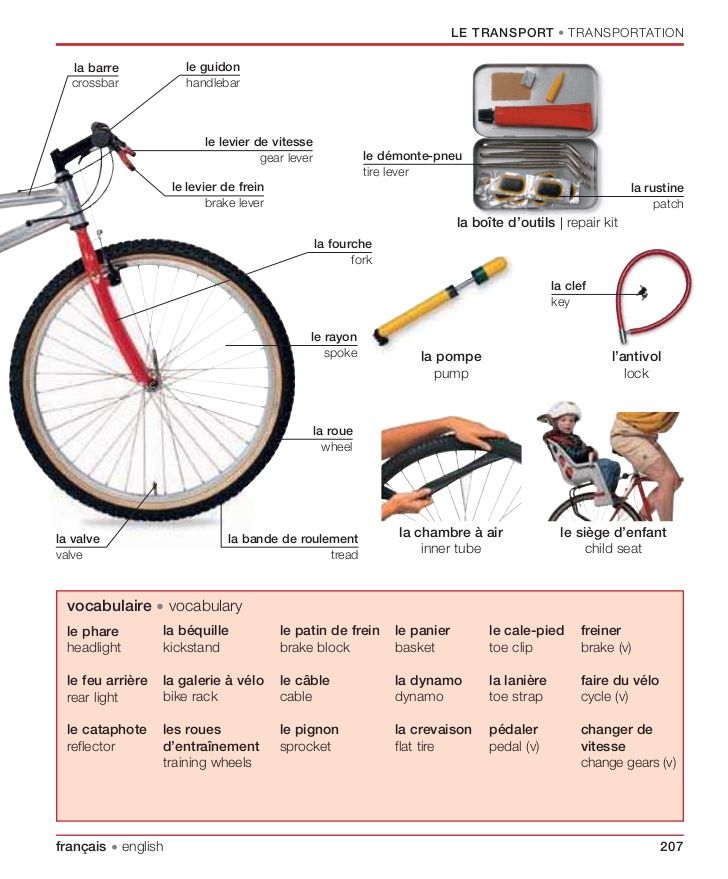
At this point, if you’re at the roadside due to a puncture, now is the time you need to thoroughly check inside the tyre carcass for the offending thorn/flint/shard of glass or whatever has caused the flat.
Beware: sharp bits of glass poking through can also cut fingers!
To refit the tyre: start with pushing on just a single bead so the tyre is held in place. It’s a nice touch to align your tyre logos with the valve and it can make locating future punctures easier. Details count.
Before trying to fit the new tube, the best tip I can offer is to inflate it slightly.
It’s really important the tube has some air inside as this will make it hold its 'roundness' and shape which makes fitting it so much simpler, and significantly reduces the chance of pinching the tube during fitting.
Pop the valve in first and then guide the inner tube into the tyre carcass. Immediately you will notice how much easier this is to achieve with the partially inflated tube, rather than a dead flat one.
Immediately you will notice how much easier this is to achieve with the partially inflated tube, rather than a dead flat one.
Check the inner tube is completely within the rim bed all around.
Place the wheel on the floor once more, valve at the bottom, and begin opposite (at the top) working the bead of the tyre back into the rim bed with your thumbs.
As per the tyre removal technique, try to work the slack around with you as you push the tyre bead in. With practice this will become second nature.
At the end point (try to finish at the valve) it may look like the tyre will not fit, but trust me it will. It just needs a good shove.
Strong thumbs are helpful, but it’s good technique not brute strength that makes this easy. Again, practise!
If necessary go back a few more times, working the slack around once more and pushing a little more of the tyre on each time.
Tip: Little bites are helpful – ie, push a bit on at a time, don’t try and push a huge chunk over in one go. You’ll just end up frustrated and with very sore thumbs.
You’ll just end up frustrated and with very sore thumbs.
Why you should finish at the valve: Once the final part of the tyre is seated end by pushing the valve stem upwards (into the rim) to ensure the tube is not trapped here (where it is usually thickest).
I’d advise one final visual check around the entire bead to check no part of the inner tube is trapped before inflation. But this should never be a worry if you have put sufficient air/shape into the tube in the first place, as it won’t lie flat.
Now you’re ready to inflate, using your mini pump or CO2 inflator if you’re at the roadside, or your track pump at home.
Ready to attempt something tougher than changing an inner tube? Read our guide on how to build a home workshop
Biketoworkday is supported by its audience. When you buy through our links, we may earn an affiliate commission.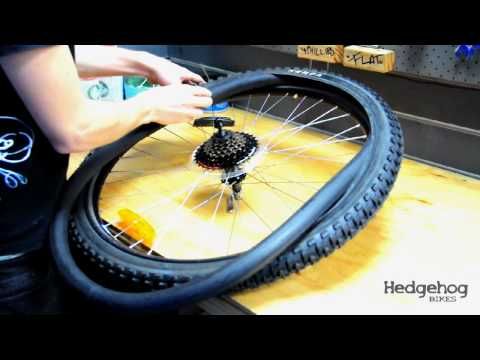 Learn more
Learn more
Written by Gary Johnson / Fact checked by Henry Speciale
Do you find it impossible to change your bike tubes without levers? Let me tell you that changing a bike tube doesn’t have to be a chore and is even possible without the help of tire levers.
All you have to do is to move the slack round in one place. Applying a few techniques also helps and can really save you from all the struggles.
To know more about how to change a bike tube without tire levers, follow the steps, and I assure you that you will have your bike tube fixed in no time.
Table of Contents
Get ready to change your bike tube without needing those pesky and flimsy tire levers. This technique on how to change a bike tire without tire levers is perfect for mtb tires and other wide-tired bikes.
This technique on how to change a bike tire without tire levers is perfect for mtb tires and other wide-tired bikes.
I do not recommend applying this technique with road bike tires because they are usually tighter to the bike rim, making the tube more difficult to change.
Step 1: Put on GlovesSafety is our top priority when working with bikes. That’s why I highly encourage wearing gloves when changing a road bike tire or any other tire. However, this is an optional step in the process.
If you’ve got no gloves, then you can do the steps without them. Just be sure to be careful while you follow the process.
Step 2: Deflate TireMost bikers usually skip this step because the tire is already flat before changing the bike tube. However, if your tire is not deflated, it’s best to let some air out. You can do this by poking the tire using a small and relatively pointy object.
When you have a deflated tire, it is much easier to squeeze its sides. This will break the tire loose from the bike rim.
This will break the tire loose from the bike rim.
This is the primary key to change bike inner tube without tire lever quickly and systematically.
First, get one tire bead into the center of the rim. You can do this by pushing the tire into the bike rim’s center. Repeat this step on the second bead.
Step 4: Push the TireThe loose beads you established in the previous step will act as the primary support to ultimately push the tire off the bike rim.
Support the wheels on the floor using your feet. Start using your thumbs to push the tire bead off the bike rim.
After that, use your hand’s palm as a lever by moving it in an outward direction.
Some rim and tire combinations are more difficult to work with compared to other models. So, I highly suggest trying out your specific set-up at home. This will help you the next time you’ll remove tires on a busy road or under pouring rain.
After getting one section of the bike tire over the rim’s edge, it would be easier to continue and push it off completely.
If the reason you have to remove a bike wheel is due to a puncture, it’s time to thoroughly look for the offending thorn, glass shard, or flint inside the tire carcass. Knowing the cause of your flat tire can help you lessen your time at the roadside.
It is essential to be wary of the glass poking through the tube because it can cut through your fingers.
Step 6: Inflate the Tube a Little BitNow that you successfully removed the tire from the bike tube, it’s time to slightly inflate the new tube. This is the best tip I can give before you fit the new bike tube. Giving your tube some air inside will definitely help retain its roundedness and proper shape.
This step is a simple process to effectively lessen your chances of constantly pinching the tube while fitting it.
After step 6, lay the tube over one side of your tire and align the valve bike stem with the stem hole. Then, carefully squeeze the tire where the hole is located and put the valve stem through the valve stem hole.
Then, pull on the bike stem to ensure that most parts of it go through the hole as much as possible. If you noticed that the bike tire doesn’t go over the tubing by itself, you should lift it up and over the tube.
You should be careful not to twist the bike tube. While doing this, you will notice how easier it is to do this step with a partially inflated tube than a flat one.
Then, you must thoroughly check if the internal tube is installed correctly within the bike’s rim bed.
Step 8: Push the Bike Tire Wall Back in the RimAfter inserting the inner tube in the tire, push the tire wall back inside the bike rim. This process is the exact opposite of getting rid of the bike tube.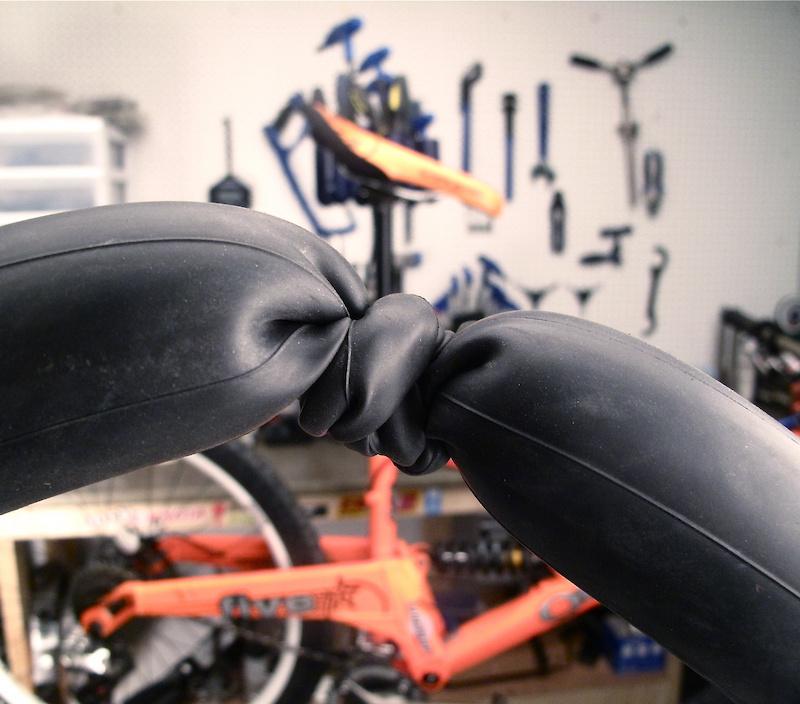 Jam the wheel side and force it over the rim wall.
Jam the wheel side and force it over the rim wall.
Use one hand to grip the initial point in place. Then, use your other hand to further get the tire inside the rim.
Step 9: Do a Final Visual CheckAfter you change bike tires successfully, I highly suggest doing one final check around the whole bead. This will ensure that there is no trapped inner tubing before you do the final inflation.
However, if you put just the right air volume in the tube beforehand, the tire won’t lie flat and this probably won’t be a problem.
Step 10: Start InflatingYou should then be ready to inflate the bicycle tire, which you can do at the roadside quickly using the inflator pump or a CO2 inflator. You can also use a floor pump if you’re changing the bike tube at home.
Now that you have a concrete idea of this tire lever alternative, you can easily change your bike tube without having special tools. In case you have questions regarding the whole process, you can also check out this video tutorial.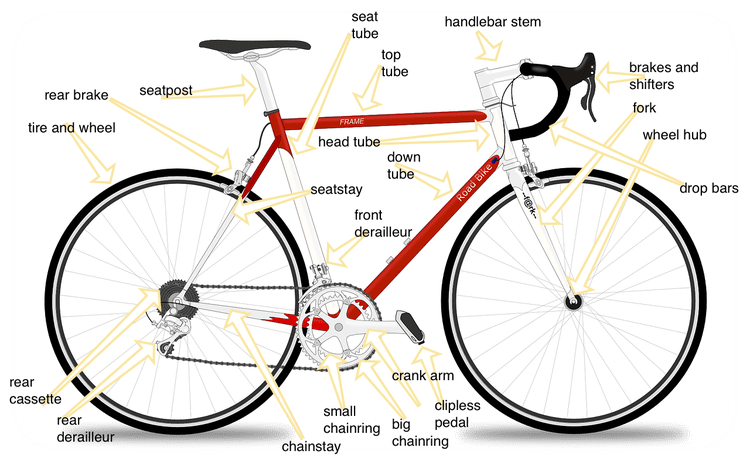
Pro Tips:
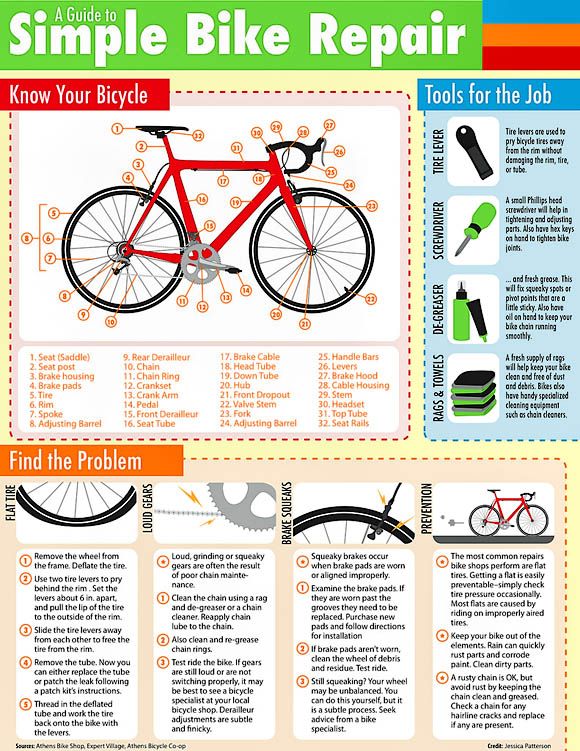
How was the tutorial? Did you enjoy this comprehensive guide on how to change a bike tube without tire levers? This handy trick will save you time on the road as you take care of your bicycle during the trip.
You won’t have to worry about getting stuck on the road with a flat tire because you’ll know how to change the tube using your bare hands.
Of course, we love to hear from you. Tell us your experience in the comments and share the article with your loved ones. It would help us a lot.
Gary Johnson
“I ride my bike to work for years, but is that enough? Our carelessness towards our surroundings has taken a toll on the environment. And now, everyone is responsible for changes; even the most minor contribution is counted. With this hope and spirit, I started with my partner to establish Biketoworkday to help more individuals commute to their work sites on their bikes.”
03/05/2013
Probably the most common breakdown in a cyclist is a tire puncture, especially if he rides in an aggressive style. Either he hit the glass, then a nail, and sometimes he just ran into the curb at speed. Experienced cyclists can to change the camera in a bicycle with eyes closed, but what about a beginner who can’t even remove the wheel, let alone change the camera. The main thing is not to despair! If you are traveling a long distance (and always better), take a pump with you, a spare tube, or, in extreme cases, a "bike first aid kit" for the wheel. Someday she will save you from the fate of pulling the bike "on yourself".
Either he hit the glass, then a nail, and sometimes he just ran into the curb at speed. Experienced cyclists can to change the camera in a bicycle with eyes closed, but what about a beginner who can’t even remove the wheel, let alone change the camera. The main thing is not to despair! If you are traveling a long distance (and always better), take a pump with you, a spare tube, or, in extreme cases, a "bike first aid kit" for the wheel. Someday she will save you from the fate of pulling the bike "on yourself".
So, if you punctured the wheel , first you need to get off the bike, in no case continue to move on a flat tire . Firstly, you will tear the tube even more, and secondly, you can ruin the tire, and in the worst case, the rim.
How to change the tube on a bicycle
1) If the wheel has not completely deflated - deflate it to the end, to do this, unscrew the nipple (spool) cap. If you have a nipple (spool) the same as in the car, press something sharp on the small button in the middle and hold until the tire is flat. If you have a cap with a key for the spool, then just unscrew it. If you have a nipple (spool) like in old bicycles, unscrew the lamb and take it out. nine0013
If you have a nipple (spool) the same as in the car, press something sharp on the small button in the middle and hold until the tire is flat. If you have a cap with a key for the spool, then just unscrew it. If you have a nipple (spool) like in old bicycles, unscrew the lamb and take it out. nine0013
2) Remove the wheel. If the wheel is on an eccentric, removal will not cause difficulties, if not, then keys will be needed (depending on the bike and wheel - 13-17).
3) If you have "pliers", use them to remove the rim from the wheel, if there are no pliers, you can use an improvised tool (wrenches, etc.), but it is advisable not to use objects with a sharp edge - this can lead to damage to the tube or rim. Tear the tire with your tool and, resting it against the rim, press down until the edge of the tire comes out of the rim, then take the second key or mount and do this action again, while NOT removing the first key. When you feel that the keys do not lean back when you release them - just try to move the second key in a circle away from the first key.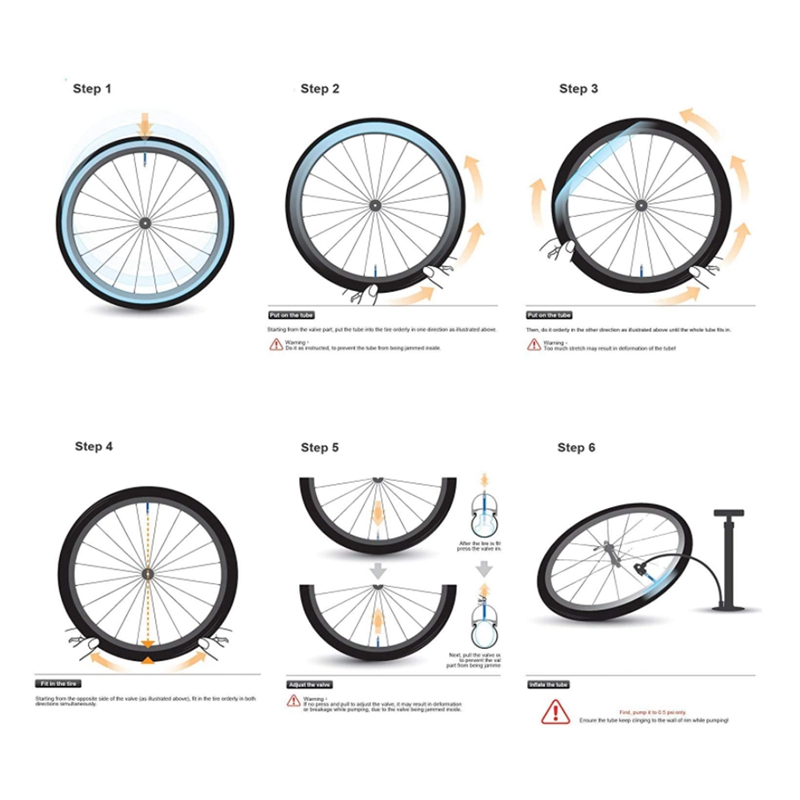 nine0013
nine0013
4) Remove the camera by simply grasping it with your fingers. Grasp the opposite side of the nipple (spool).
5) In principle, you can insert a new tube, but I recommend removing the tire completely (this can be done by hand or with pliers (wrenches)).
Check the condition of the rim: there are no metal burrs inside, check the condition of the rim tape, look inside the tire. This should be done if you change cameras frequently and don't know where you might have blown a tire. nine0013
How to install a tube in a bicycle wheel
1) Take a new tube or a sealed tube (how to tape a tube), squeeze it with one hand and move it around - this will help to clean it of unwanted foreign objects (rubber pieces, metal chips, etc.) .d.)
2) Lightly inflate it, if you removed the tire completely, put it on one rib (if the rubber is directional - make sure you install it correctly (you can peek at the rear wheel if the treads are the same)). Roughly outline where the hole from the nipple (spool) is, put the chamber into the tire without twisting or breaking it. Insert the spool (nipple) into the hole and screw on the cap. nine0013
Roughly outline where the hole from the nipple (spool) is, put the chamber into the tire without twisting or breaking it. Insert the spool (nipple) into the hole and screw on the cap. nine0013
3) With your hands (if the tire is soft) or using the same tool, slide the second rib of the tire onto the rim. BE CAREFUL if using the tool, do not tear the chamber.
4) Immediately inflate the wheel lightly and roll it until the tube settles, then inflate the wheel to the desired pressure (how to find out what pressure to inflate the wheel)
5) Put the wheel on the bike and clamp it.
6) MANDATORY! Check the brakes.
Type of valves
There are three main valve types:
1) Velonipel (French)
2) Auto-nipel (American)
3) A nipple like in old bikes (German)
bike shop)
A flat tire on a bicycle is a fairly common occurrence, especially when riding on rough terrain or using poor quality or worn tires.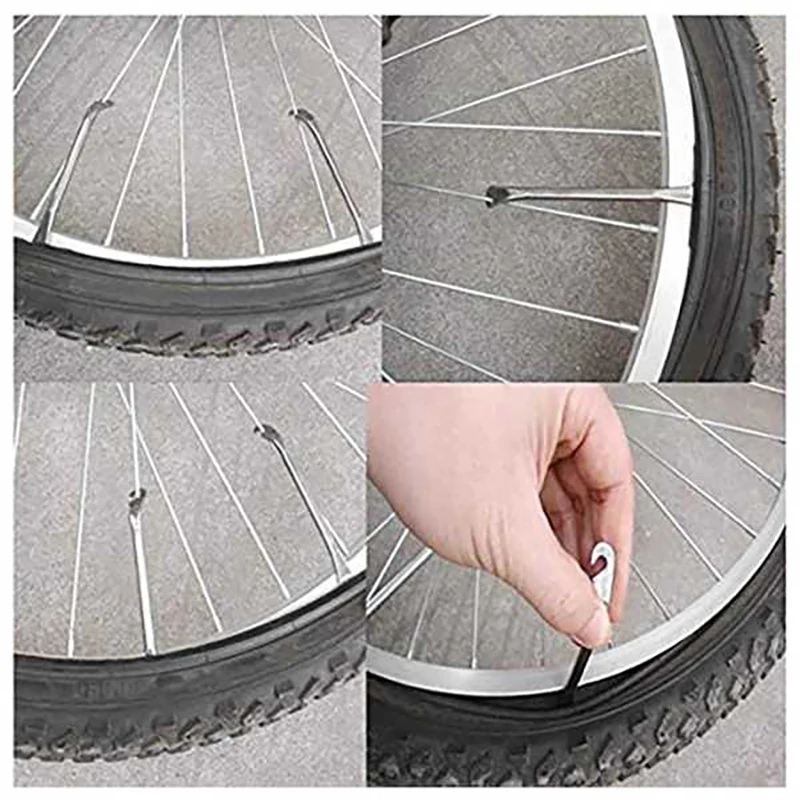 Such an unpleasant incident happens to a cyclist at least once a season, and some are "lucky" to change the camera two or three times in a short trip.
Such an unpleasant incident happens to a cyclist at least once a season, and some are "lucky" to change the camera two or three times in a short trip.
And if it takes five minutes for an experienced cyclist to change the tube on a bicycle, then for some reason beginners are very afraid to remove the tire on their own and most often drag their bike to a service or to friends. In fact, changing the camera is very simple:
 In this case, you can use any sufficiently thin and durable objects: various wrenches, a beer opener, or even a camping spoon. The only restriction: your tool should not have sharp ends, otherwise you will pierce the camera in a couple more places. Because of this, it is strongly not recommended to use screwdrivers, knives and other sharp objects to remove tires. It is also worth remembering that if you press too hard on the rim, you can damage it. As an example, in this manual we will use ordinary wrenches as montages, which were the first to come to hand - not the best, hiking option. nine0012 In order to pull the tire out of the rim, you need to pick up its edge with the first "wire" and pull it out of the rim. At the same time, the mount must be held so that the tire does not end up inside the rim again, and the mount itself does not fly into your forehead.
In this case, you can use any sufficiently thin and durable objects: various wrenches, a beer opener, or even a camping spoon. The only restriction: your tool should not have sharp ends, otherwise you will pierce the camera in a couple more places. Because of this, it is strongly not recommended to use screwdrivers, knives and other sharp objects to remove tires. It is also worth remembering that if you press too hard on the rim, you can damage it. As an example, in this manual we will use ordinary wrenches as montages, which were the first to come to hand - not the best, hiking option. nine0012 In order to pull the tire out of the rim, you need to pick up its edge with the first "wire" and pull it out of the rim. At the same time, the mount must be held so that the tire does not end up inside the rim again, and the mount itself does not fly into your forehead. After that, with the second mount, similarly pull out the edge of the tire next to the first mount. Don't forget to hold the first montage while doing this!
Don't forget to hold the first montage while doing this!
If the tire tension is still high after using two mounts, use the third one in the same way.
You should end up with one end of the tire completely out of the rim. nine0013
Done. Now you can start sealing the damaged camera or just install a new one.